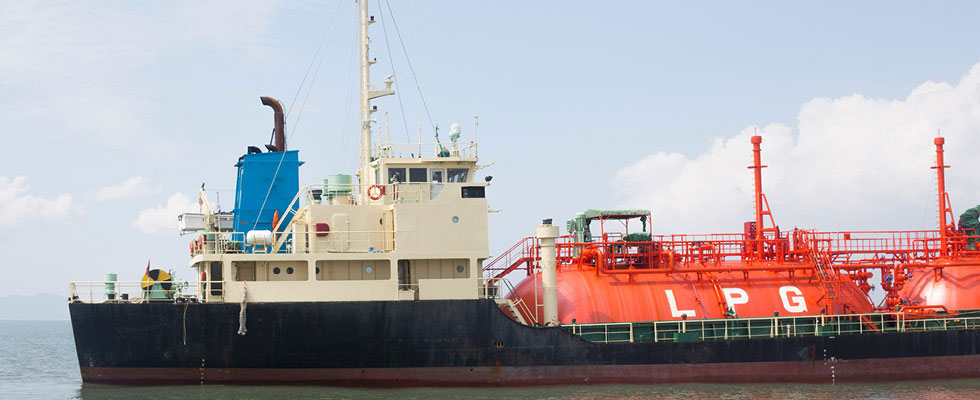
With the trauma of winter 2013-2014 still a not-too-distant memory to many in the propane industry, there is a sense that many positive changes will reduce the chances for crisis a decade later.
“Since the winter of 2013-2014, there has been a dramatic increase in propane production across many areas of the country, but mostly in the Marcellus/Utica region,” said John Powell, senior vice president at Energy Transfer. “This region is much closer to the consuming parts of the country, making logistics much easier to service than from the [Conway, Kansas] and [Mont Belvieu, Texas] hubs. Between additional supply; additional infrastructure, including rail terminals, pipelines and truck terminals; and a focus on efficiency across all modes of transportation, winter supply constraints have dramatically been reduced over the years. The areas of concern are still with railroad reliability as well as the final mile in truck transportation in extreme weather conditions.”
“Our industry is particularly good at problem solving and getting gas where we need it, when we need it. … Currently, NPGA is working to get truck waivers before a storm hits, not after,” said D.D. Alexander, president of Global Gas Inc. and treasurer of the National Propane Gas Association (NPGA). She encourages marketers to stay on top of the weather forecasts and to be as proactive as possible during winter months.
Jeff Thompson, supply consultant at Propane Resources, said he is always concerned about infrastructure every winter. “If a crisis hits, there is only so much that the infrastructure can put into the field in a short period of time,” he said. He believes retailers should build a supply plan every winter on the belief that the infrastructure will fail the retailer sometime during peak demand season.
“Call it what you want — the retailer should go into October lasting to March on the top side in bulk storage and top side in customer tanks,” Thompson said. “If I had to look at improvements … I continue to be concerned with the transportation end of the system — drivers getting older, retiring … younger drivers not coming into the industry. Trucking optimized for the 10-months-out-of-the-year demand window, not the three-to-four-week-crisis demand window.”
Anne Keller, managing director at Midstream Energy Group, believes retail marketers became more focused after winter 2013-2014. “I have to believe that the folks who got caught short back then — or in other winters — did a thorough review of their supply chains and made some changes to expand inventories at the end of the line, as well as looking at ways to get their customers in good position ahead of the winter,” she said.
Keller added that we haven’t seen such extreme shortages since then, although the weather hasn’t been as bad in as many places at once, either. “With precautions in place, and given the strong storage levels at the commercial hubs in spite of record exports, it looks like we’ll be in good shape this year,” Keller said. “A concern would be that we don’t know what impact the mass migration of remote workers to locations that are traditional propane markets will be under severe weather conditions. Places like Kalispell, Montana, that typically are under feet of snow most of the winter now have direct flights from Houston for second homeowners, and they may not be prepared to be housebound for days on end.”
Phil Farris, director of wholesale marketing at 3Eight Energy, is not confident the industry will fare a cold winter much better than it did in 2013-2014. “I’ll try not to be negative, but I think the short answer in the Southeast is no. The events that led up to the Q1 2014 crisis were a huge crop drying season that rolled right into a sustained cold period across the eastern half of the U.S. Demand exceeded supply and transportation capabilities. There were plenty of useful reactions to that crisis — hours of service waivers, priority in rail and pipeline movements, post-winter analysis, etc. But if you exclude export [and takeaway] capacity … not much has changed or been upgraded in the distribution system since then.
“On the positive side, after a mediocre crop drying season this year, pre-winter inventory is close to all-time highs and production is much higher now,” Farris continued. “Most retailers are likely in better shape this time, with customer and company storage on the top end this year.”
Specific Factors to Watch in Winter 2023-2024
Noting that since 2013-2014, we have seen some winters lose 50 million barrels (MMbbl) in a 60-day period during the high demand months, BPN asked the experts what specific factors they are advising retailers to watch during the current winter.
“We can see a propane market that has plenty of propane and stands almost 40-plus MMbbl above the same time as the start of the 2013-2014 polar vortex,” said J.D. Buss, president of Twin Feathers Advisors. “Prior winters saw similar inventory levels but also had lower production levels and some growing export levels.
“For this coming winter, we see exports possibly hitting some roadblocks due to restrictions in the Panama Canal, and even the potential for congestion in the Suez Canal,” Buss added. “Production levels, however, continue to be very strong.”
“We all need to remind ourselves that most of the storage facilities outside of the hubs, Conway and Mont Belvieu, are holding substantial amounts of inventory, which is only freight-logical to the local markets,” Powell said.
Keller also stressed the importance of inventory proximity. “This year’s emphasis should be on having inventory close to the customer to avoid having to pull from a major hub and avoid regional stockouts. But given the situation in shipping, it’s unlikely we’ll have a severe drawdown that would affect pipeline shipments within the U.S. Ship owners are saying the number of slots for very large gas carriers through the Panama Canal to Asia will be even more limited during the worst U.S. winter months of January and February, so our peak liftings from the U.S. Gulf Coast to Asia at least should be over by late December or early January.”
Alexander also noted the fact that the U.S. is near its export capacity this winter, but that more export capacity should be in place by winter 2024-2025. “Inventories can decrease at the drop of a hat, so to speak,” she said. “We are going into winter with large inventories. These can be drawn down by larger exports or extreme winter. In my opinion, the bigger issue is regional areas that get hit with challenges … that then cause logistical issues in regional areas that get hit with supply interruptions. If a truck or rail car has to travel longer than normal, we get less turns with the same assets.”
“Don’t assume winter is over because November was lackluster,” Thompson said. “If weather and traders get on it, we could see inventories at the 45 MMbbl to 50 MMbbl level by the end of March. This may not lift propane prices substantially, but it will make it hard for propane prices to continue to move down with larger inventory draws.”
The Impact of Wars on Winter 2023-2024
With the geopolitical factors usually associated with wars, BPN asked about the impact of the Russia-Ukraine War and the Israel-Hamas War on the propane industry. “Obviously, if the war intensifies and other countries get drawn into the war, we may see OPEC+ continue their production cuts to keep the price of oil high,” Alexander said. “It would also cause many unforeseen political issues of doing business around the world. Currently, there is plenty of natural gas in Europe.”
Powell also expressed concern if war intensifies. “We have not really seen any supply issues as a result of the wars to date, although an escalated outbreak could affect Middle East supply which would be cause for concern internationally. But [it would] not have much effect on the local consumer other than price, since most of the product is already in the field and ready to be delivered to the retailers.”
“Russian barrels are moving via rail and smaller vessels to their buyers, so although trade patterns have been altered, it doesn't seem like the barrels have been taken off the market,” Keller said. “Europe in particular is somewhat 'spoilt for choice' in that it's the easiest move from the U.S. now. Any disruption in the shipping lanes due to the Gaza situation could cause problems for buyers of Middle East cargoes. We should see if their buyers, largely Japan and India, are taking additional cargoes from [the] U.S. soon if it looks like there will be problems getting their allotted volumes.”
“Both conflicts are and will be long term,” Farris said. “The situations themselves are not likely to have a direct effect on a propane dealer in the U.S. But indirectly, there are many side issues that are a result of the conflict. Protests, roads blocked, facilities damaged, the potential for discontent — politically and economically — in other countries and in the U.S. This can certainly have an indirect effect on energy distribution and prices.”
“Russia-Ukraine, along with Israel-Hamas, military conflicts raise the geopolitical risk factors,” Buss said. “Their impact on the energy markets seems a bit ‘played out.’ European natural gas storage will be above five-year highs heading into winter. As of November and early December, no Middle Eastern nation had made dramatic production cuts or logistical changes due to the Israel-Hamas conflicts. In fact, Saudi Arabia’s staunch adherence to prior production cuts has helped to maintain a high spare capacity of production, which can often be viewed as bearish.”
Additional Advice for 2023-2024
What further advice did the experts have for this winter?
“It may be ‘old school,’ but relationships are critical when things get tough,” said Farris. “And solid relationships are not expensive. … What’s not so easy is contracting and committing to backup supply and transportation … which is never going to be the cheapest option. It may even involve reaching out to supply and transportation providers outside of your typical footprint. The propane supply and transportation landscape is always evolving. A lot of big companies have written off propane over the years.”
“Through the years, most retailers have become a lot more efficient in scheduling deliveries and staying full across their platform in anticipation of extreme times of demand,” Powell said. “Specific concerns would be similar to last year; the supply/demand fundamentals have changed most dramatically in the western part of the U.S. and Canada. Additional export terminals have reduced the amount of excess supply retailers have had to rely on in the past as that excess is being sold across the western docks to Asia.”
Buss offered this advice: “What should a propane distributor in North America be considering? Not over-committing on supply. Making sure you don’t have supply overhang volumes at the end of March. Make sure you have adequate transportation for this winter’s supply. Very cautiously consider fixed price decisions for the 2024-2025 winter. Be willing to have an open mind regarding the 2024-2025 supply season.
“These are not the winters and markets that existed 20 years ago,” Buss continued. “Propane prices and supply are interconnected with global markets. Before making your plans for the next season, consider all these factors and be willing to seek outside advice before finalizing commitments.”


